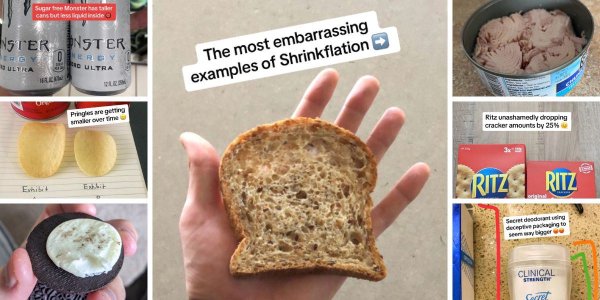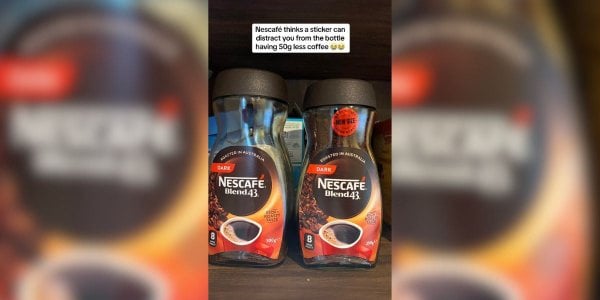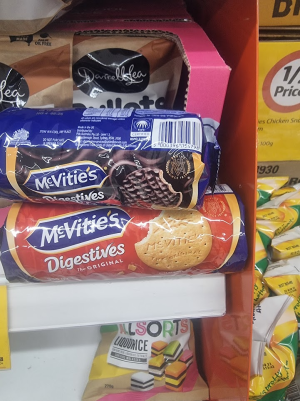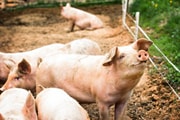Are Coles and Woolworths secretly reducing grocery sizes? Discover the truth about 'shrinkflation' in Australia
By
VanessaC
- Replies 21
Do you feel like your grocery favourites are getting smaller and smaller? Perhaps there’s one less biscuit to reach for during your cuppa or that packet of chips doesn’t quite fill the bowl anymore…You may actually be a victim of ‘shrinkflation’!
Shrinkflation is when brands start reducing the size of their products but keep selling them for the same (or higher) price. It’s a practice that has been happening in Australia and around the world for years, and it’s getting worse.
We all know food prices are rising, and many have been asking if we're paying more for less. But this is a difficult question to answer, as prices and sizes can change often, and they are often hard to spot.
Neal Chauhan is a 'shrinkflation' expert who has kept his eyes open for supermarket trends, and he’s collected a shocking range of evidence.
Anyone who frequents Coles or Woolworths will be familiar with many of the products on the list, like Nescafé, Coke, Glad Wrap and Smiths chips.
Prices for these items have stayed the same, but now we’re getting far less for our money–and we’re not always being told about the changes.
Take Nescafé's Australian-roasted Blend 43, for example. The product was silently dropped from 300g to 250g in supermarkets, but it came with a sticker that tried to make the change look positive.
'The Nescafé example, it kind of blows my mind that they’d slap a shiny, “New Size” sticker on something when it's clearly smaller in every way,' says Neal. 'It's a disgrace.'
Glad Wrap's bulk option has also been reduced by 25 per cent, with a 'value pack' going from 400m to 300m in length.
But in the case of cereal–brands like Weet-Bix and Kellogg’s are among the worst offenders when it comes to ‘shrinkflation’.
'One of my favourites, or I guess maybe least favourite, examples is cereal. I've seen pictures of the overall amount decreasing but the front of the box staying exactly the same size,' Chauhan said.
For example, a Weet-Bix value pack has gone from 1.5kg to 1.2kg–a 300g reduction for the iconic breakfast. Similarly, Froot Loops have gone from 500g to 460g while raising their price tag to $10. The item is currently on sale at Coles for only $7.50.
‘It feels unfair to package your stuff in a pretty empty box,’ Chauhan continued.
Ice cream giant Ben and Jerry's recently shrank the size of its pints. However, the brand released a statement to explain the changes. It read:
‘Maintaining top quality ice cream and values sourced ingredients comes with increasing costs. And so, we’ve made the difficult decision to make our tubs slightly smaller.’
The statement continued: ‘We wanted to be transparent with you because we care about you, our fans and our communities while making the best ice cream in the world.’
Even sweet treats have been impacted by the trend. Oreos, LCMs and Monte Carlos have all seen their filling seemingly halved since they were first introduced.
While Cadbury’s chocolate blocks went from 250g to 200g a couple of years ago and now weigh 180g.
It’s easy to be angry about companies reducing the sizes of groceries while keeping prices the same. But Neal believes the best way to tackle the issue of ‘shrinkflation’ is with transparency.
Strategies for Smart Shopping and Avoiding the Impact of Shrinkflation
Frustrated with retailers and manufacturers sneakily reducing the size of your favourite products while keeping the prices intact? There's a way to fight back. As a savvy shopper, there are several strategies you can adopt to outsmart ‘shrinkflation’.
First, take time to research products online and compare packaging sizes, weights, and prices at different outlets before deciding where to make your purchase.
Second, let the power of unit pricing work for you. This is the cost per unit of measure (like per gram or litre) that's displayed next to the selling price on supermarket shelves. It's designed to help you compare similar products and figure out which gives you the best value.
Third, consider alternative brands to your usual favourites. For instance, if you notice that your favourite bread has decreased in size but not in price, try a different brand. As manufacturers compete for your dollar, they might offer bigger sizes or better deals on their products.
Finally, try buying in bulk. Many Australians are turning to bulk-buy stores, where prices can be considerably cheaper for larger quantities. While it may not be an option for all your groceries, certain staples like canned food, pasta, and rice might be significantly cheaper when buying in bulk.
Remember, dear members, being informed is the best defence against ‘shrinkflation’. You can read more about it right here!

Have you noticed ‘shrinkflation’ happening to your favourite products too? Let us know in the comments section below!
Shrinkflation is when brands start reducing the size of their products but keep selling them for the same (or higher) price. It’s a practice that has been happening in Australia and around the world for years, and it’s getting worse.
Neal Chauhan is a 'shrinkflation' expert who has kept his eyes open for supermarket trends, and he’s collected a shocking range of evidence.
Anyone who frequents Coles or Woolworths will be familiar with many of the products on the list, like Nescafé, Coke, Glad Wrap and Smiths chips.
Take Nescafé's Australian-roasted Blend 43, for example. The product was silently dropped from 300g to 250g in supermarkets, but it came with a sticker that tried to make the change look positive.
'The Nescafé example, it kind of blows my mind that they’d slap a shiny, “New Size” sticker on something when it's clearly smaller in every way,' says Neal. 'It's a disgrace.'
Glad Wrap's bulk option has also been reduced by 25 per cent, with a 'value pack' going from 400m to 300m in length.
But in the case of cereal–brands like Weet-Bix and Kellogg’s are among the worst offenders when it comes to ‘shrinkflation’.
'One of my favourites, or I guess maybe least favourite, examples is cereal. I've seen pictures of the overall amount decreasing but the front of the box staying exactly the same size,' Chauhan said.
‘It feels unfair to package your stuff in a pretty empty box,’ Chauhan continued.
Ice cream giant Ben and Jerry's recently shrank the size of its pints. However, the brand released a statement to explain the changes. It read:
‘Maintaining top quality ice cream and values sourced ingredients comes with increasing costs. And so, we’ve made the difficult decision to make our tubs slightly smaller.’
The statement continued: ‘We wanted to be transparent with you because we care about you, our fans and our communities while making the best ice cream in the world.’
Even sweet treats have been impacted by the trend. Oreos, LCMs and Monte Carlos have all seen their filling seemingly halved since they were first introduced.
While Cadbury’s chocolate blocks went from 250g to 200g a couple of years ago and now weigh 180g.
It’s easy to be angry about companies reducing the sizes of groceries while keeping prices the same. But Neal believes the best way to tackle the issue of ‘shrinkflation’ is with transparency.
Frustrated with retailers and manufacturers sneakily reducing the size of your favourite products while keeping the prices intact? There's a way to fight back. As a savvy shopper, there are several strategies you can adopt to outsmart ‘shrinkflation’.
First, take time to research products online and compare packaging sizes, weights, and prices at different outlets before deciding where to make your purchase.
Second, let the power of unit pricing work for you. This is the cost per unit of measure (like per gram or litre) that's displayed next to the selling price on supermarket shelves. It's designed to help you compare similar products and figure out which gives you the best value.
Finally, try buying in bulk. Many Australians are turning to bulk-buy stores, where prices can be considerably cheaper for larger quantities. While it may not be an option for all your groceries, certain staples like canned food, pasta, and rice might be significantly cheaper when buying in bulk.
Remember, dear members, being informed is the best defence against ‘shrinkflation’. You can read more about it right here!
Key Takeaways
- Australian shoppers are experiencing 'shrinkflation'–the practice of reducing the size of products while maintaining their prices.
- Brands like Nescafé, Coke, Snickers, Oreos, Glad Wrap, and Smiths chips among others have reportedly reduced the quantity of their products in Australian supermarkets without a notice to customers.
- Some products don't decrease the size of their packaging despite the decrease in the quantity, a practice considered deceptive as it tricks customers into believing that the quantity of the product has remained the same.
- 'Shrinkflation' expert Neal Chauhan argues that transparency is the best way forward, suggesting that companies should openly communicate any changes in product quantity or quality to their customers.
Have you noticed ‘shrinkflation’ happening to your favourite products too? Let us know in the comments section below!
Last edited:











